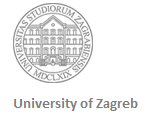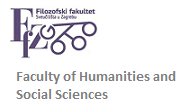Course: History of English Drama from Mass to City Play (2P/1S, 6 ECTS)
Status: elective
Teacher: Tamara Petrić, assist.
Semester: Fall term 2012/ 2013
Lecture and seminara
Language: English
The final grade in this course will depend on the following considerations: (1) a short essay/ term paper; (2) regular attendance and active participation; and (3) two exams.
Objectives: The purpose of this study—unit is to introduce students to the immediate social contexts of English medieval and renaissance drama and enable them to map out England’s political and economic interests at various points in history. Staging conditions of the Easter mass, medieval drama’s liturgical beginnings, provide insight into the role of Benedictine monasteries – the place of origin of liturgical drama — in England’s international wool and cloth trade, while the processional form and mercantile display of the Corpus Christi play helps us follow bouts of inter—class conflict and cooperation within regional market towns of late—medieval East Anglia and Yorkshire. The cultural and imaginative geography of the Levant/ the Eastern Mediterraneani and the Middle East, as well as the Baltic in the miracle or saint’s play betrays the increasing importance of foreign trade to Plantagenet economy, while Tudor, Elizabethan and Jacobean Mediterranean plays help us map out England’s political and economic interests in an increasingly global world of the sixteenth and seventeenth centuries, particularly England’s stake in the eastern Mediterranean and Atlantic trades and the Ottoman threat to the preeminence of Venice as a key mediator in Mediterranean trade. Morality plays construe an idealized feudal contract in the face of an emerging early modern state and the shift toward market dependency, Tudor comedies are concerned with import—export imbalance in inflation—plagued England, while the Jacobean city comedy censures the increasing social mobility facilitated by an influx of money due to piracy and Atlantic slave trade.
Outcomes: In addition to its function as an advanced introduction to early English drama, this course is designed to help students develop their abilities as readers, researchers, writers, and thinkers. By the end of the semester, students should be able to demonstrate their proficiency with such skills as close reading, library research, use of evidence, and argumentative logic.
Tentative schedule of readings and assignments.
Weeks 1 & 2. An Easter Resurrection Play from the Regularis Concordia of St Ethelwold (c. 965—975) and a Pantomime for Easter Day performed in the Abbey Church/ Monastical Church at Durham (England)
– “The Crusades and Eastern Europe, ca. 1100—1550”, in Mortimer Chambers, Raymond Grew, David Herlihy et al, The Western Experience (1974), 2 vols, 5th ed, New York, St Louis, San Francisco et al: McGraw—Hill, 1991; 381—415.
– “The Quem Quaeritis Trope”, “A Pantomime for Easter Day”, “An Easter Resurrection Play”, and “The Orleans Sepulcher”, Medieval and Tudor Drama (1963), ed. John Gassner, New York: Bantam Books, 1987; 33—43.
– John M Wasson, “The English Church A Theatrical Space”, A New History of Early English Drama, ed. John D. Cox and David Scott Kastan, New York: Columbia UP, 1997; 25—37.
– Roger E. Reynolds, “The Drama of Medieval Liturgical Processions”, Revue de Musicologie, Vol. 86, No. 1 (2000); 127—142.
Weeks 3 & 4. The Wakefield Muder of Abel/ Mactatio Abel
– The Muder of Abel/ Mactatio Abel, in Medieval and Tudor Drama (1963), ed. John Gassner, New York: Bantam Books, 1987; 57—71.
– Anne Higgins, “Streets and Markets”, A New History of Early English Drama, ed. John D. Cox and David Scott Kastan, New York: Columbia UP, 1997; 77—92.
Weeks 5 & 6. The Croxton Play of the Sacrament
– The Play of the Sacrament, in Early English Drama (An Anthology), ed. John C. Coldewey, New York, London: Garland Publishing, 1993; 274—305.
– Lisa Lampert, “The Once and Future Jew: The Croxton ‘Play of the Sacrament’, Little Robert of Bury and Historical Memory”, Jewish History, Vol. 15, No. 3 (2001), 235—255.
Weeks 7 & 8. Mankind; mid—term exam (in—class).
– Mankind, in Early English Drama (An Anthology), ed. John C. Coldewey. New York, London: Garland Publishing, 1993; 105—135.
– Ineke Murakami, “Mankind: Publicizing the New Guise”, Moral Play and Counterpublic: Transformations in Moral Drama, 1465—1599, New York: Routledge, 2011; 18–44.
Weeks 9 & 10. William Shakespeare, Coriolanus
– William Shakespeare, Coriolanus, in William Shakespeare, The Complete Works, ed. Stephen Orgel i A. R. Braunmuller, New York: Penguin Putnam, 2002; 1710–1751.
– Shannon Miller, “Topicality and Subversion in William Shakespeare’s Coriolanus”, Studies in English Literature, 1500—1900, Vol. 32, No. 2, Elizabethan and Jacobean Drama (Spring, 1992), 287—310.
Weeks 11 & 12. Christopher Marlowe, The Jew of Malta
– Christopher Marlowe, The Jew of Malta, ed. N. W. Bawcutt, Manchester: Manchester UP, 1978.
– Lisa Jardine, “Alien Intelligence: Mercantile Exchange and Knowledge Transactions in Marlowe’s The Jew of Malta”, Reading Shakespeare Historically. London: Routledge, 1996; 98—113.
– Weeks 13 & 14. Ben Jonson, Volpone, or the Fox
– Ben Jonson, Volpone, or the Fox, in The Norton Anthology of English Literature, Vol. 1, 4th ed, ed. M. H. Abrams, New York, London: W. W. Norton, 1979; 1115—1210.
– William R. Dynes, “The Trickster—Figure in Jacobean City Comedy”, Studies in English Literature, 1500—1900, Vol. 33, No. 2 (Spring, 1993); 365—384.
– Suzanne Westfall, “’A Commonty a Christmas gambold or a tumbling trick’: Household Theater”, A New History of Early English Drama, ed. John D. Cox and David Scott Kastan, New York: Columbia UP, 1997; 39—58.
Week 15. Elizabethan playhouses; concluding remarks; final exam.
– John Orrell, “The Theaters”, A New History of Early English Drama, ed. John D. Cox and David Scott Kastan, New York: Columbia UP, 1997; 93—112.



